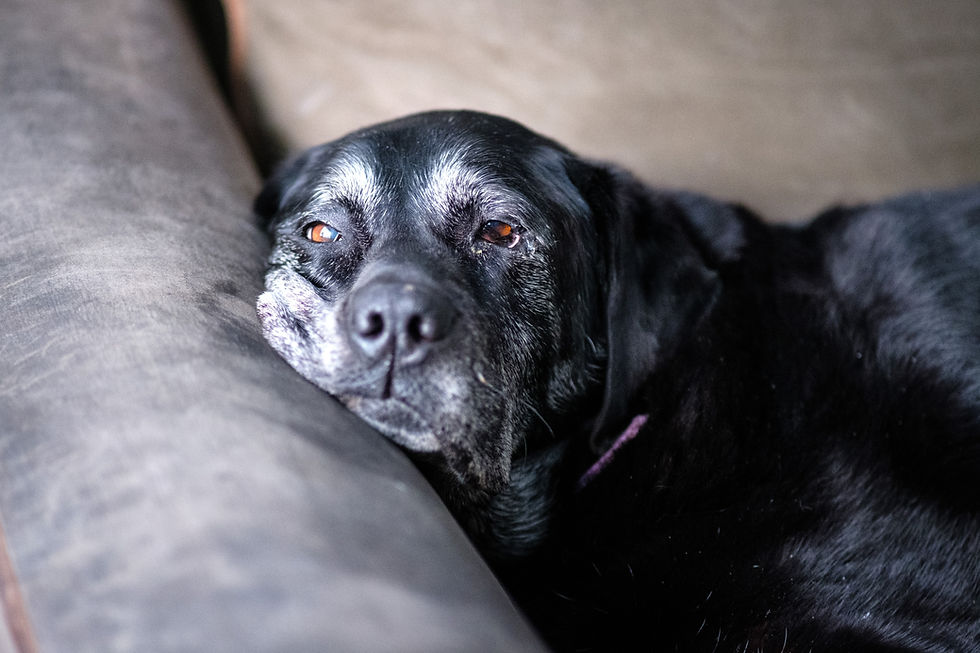7 Signs Your Sport or Pet Dog Might Need a Massage (and What to Do About It)
- K9MuscleWorks

- Apr 21
- 2 min read
Updated: May 8

Recognizing the Signs Your Dog Needs a Massage:
Whether you have a high-drive sport dog or a beloved pet, your dog’s body goes through a lot. They can’t say “I’m sore,” but their behavior and movement speak volumes. Knowing the signs your dog needs a massage helps you catch small issues before they become big ones.
In this post, you’ll learn the top 7 signs your dog might benefit from a massage, especially if they’re active, aging, or recovering from injury.
1. They’re Slowing Down or Acting “Off”
When your dog isn't playing or training like they used to, it might not just be a mood. One of the early signs your dog needs a massage is a subtle change in energy or performance. Dogs are great at compensating, but over time, soreness catches up with them.
Massage can release tight muscles and improve overall mobility and comfort.
2. They’re Stiff Getting Up or After Activity
Struggling to get up from a nap? Moving stiffly after agility or IGP training? These could be signs of muscle tension or joint discomfort.
Massage increases circulation, warms up tissues, and helps your dog move more freely.
3. They're Licking, Chewing, or Scratching the Same Spot
Excessive licking or nibbling at one area (like a front leg or hip) can be your dog’s way of self-soothing. It’s a subtle hint something isn’t right.
Targeted bodywork can address discomfort before it turns into injury.
4. They React to Touch or Are Suddenly Cranky
Does your normally sweet dog shy away from touch or snap when handled? That sudden change in tolerance might be due to underlying pain or tight muscles.
Massage not only soothes the body but also helps rebuild positive associations with touch.
5. Their Gait Looks Off or They're Favoring a Limb
Any change in how your dog moves, even a slight limp or head bob, could signal soreness. Dogs are great at masking pain, but their movement always gives them away.
Early intervention with massage can prevent compensatory injuries.
6. They’ve Had a Recent Injury or Surgery
If your dog has recently been on crate rest or is recovering from an injury, massage can support recovery by reducing scar tissue, improving circulation, and maintaining muscle tone.
Always consult your vet, but massage is a great post-rehab addition.
7. They’re Aging and Less Mobile
Older dogs benefit hugely from massage. It supports stiff joints, keeps muscles supple, and boosts circulation, especially if they’re dealing with arthritis or mobility decline.
Regular sessions can improve your dog’s comfort and quality of life.
Why Noticing the Signs Your Dog Needs a Massage Matters
Understanding the signs your dog needs a massage empowers you to take proactive steps. Massage isn’t just about pampering—it supports joint health, performance, and recovery in both pet and sport dogs.
It can even help detect abnormalities like lumps, bumps, or pain before they escalate.

Ready to Help Your Dog Feel Their Best?
As a certified canine bodywork professional, I help dogs—from elite sport competitors to beloved seniors—feel and move better through targeted massage therapy.
📍 Edmonton-based? Book a session with K9 Muscleworks




Comments